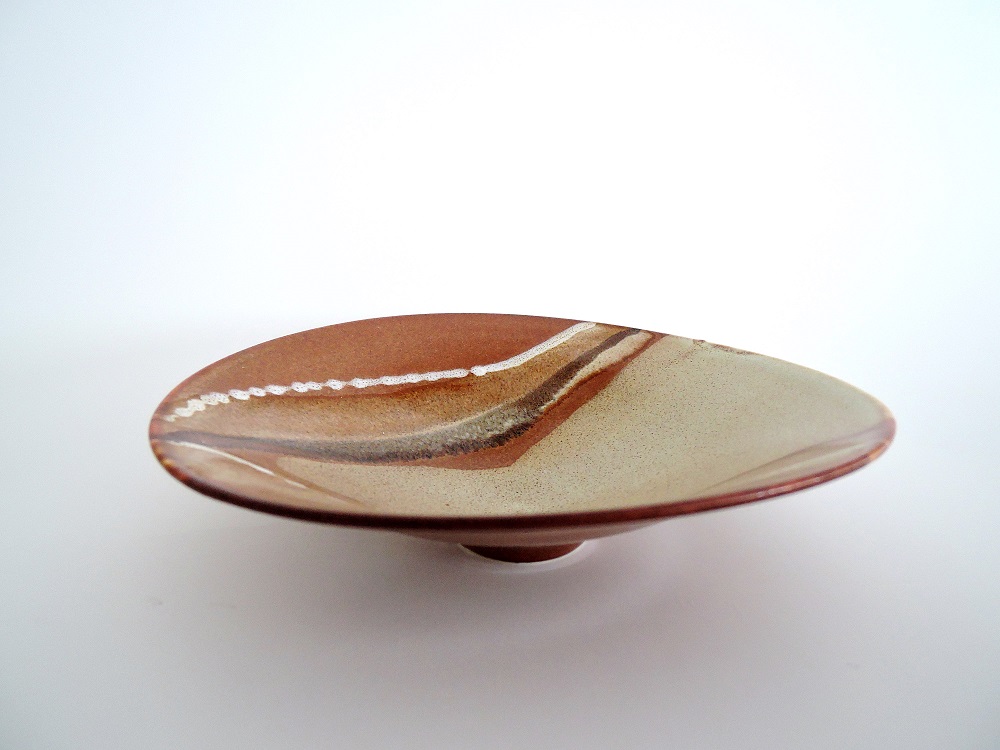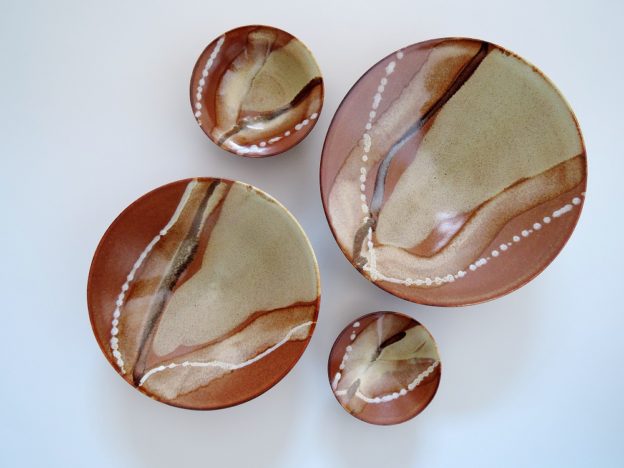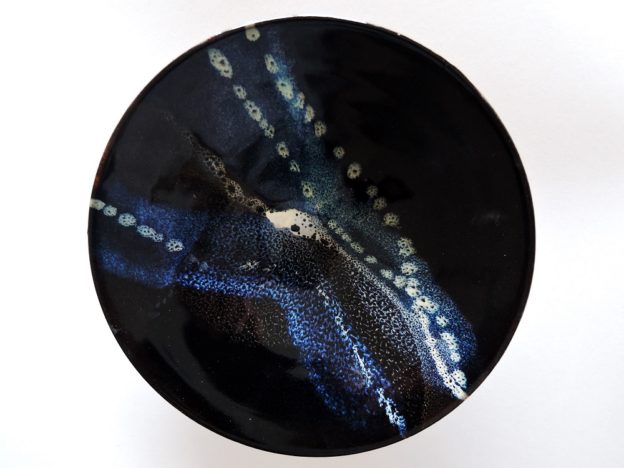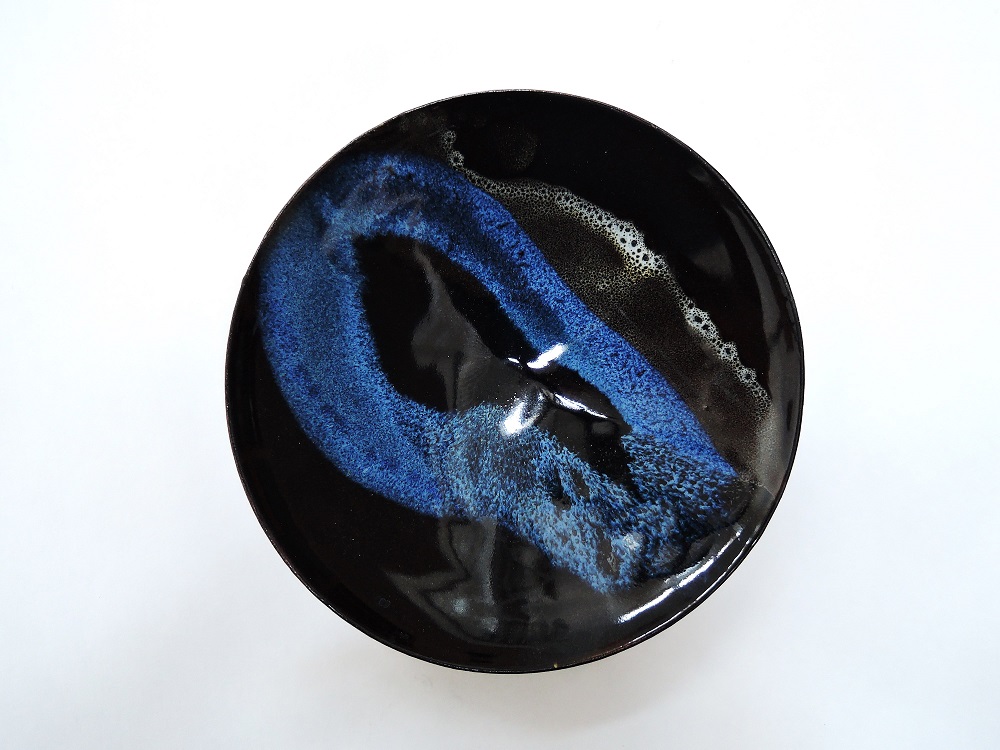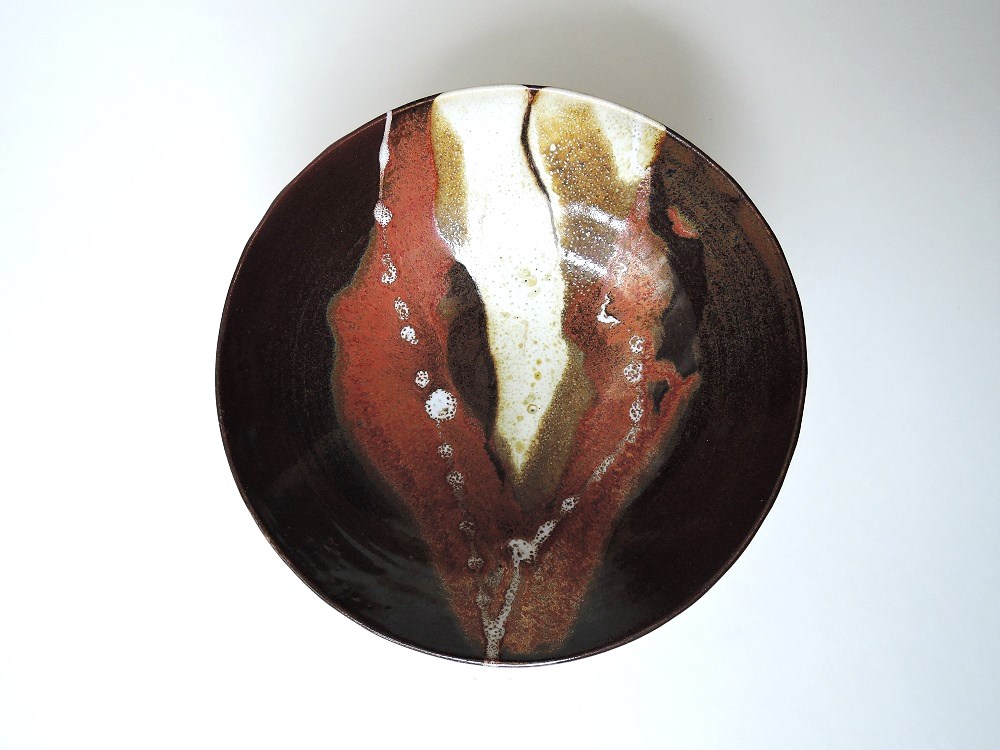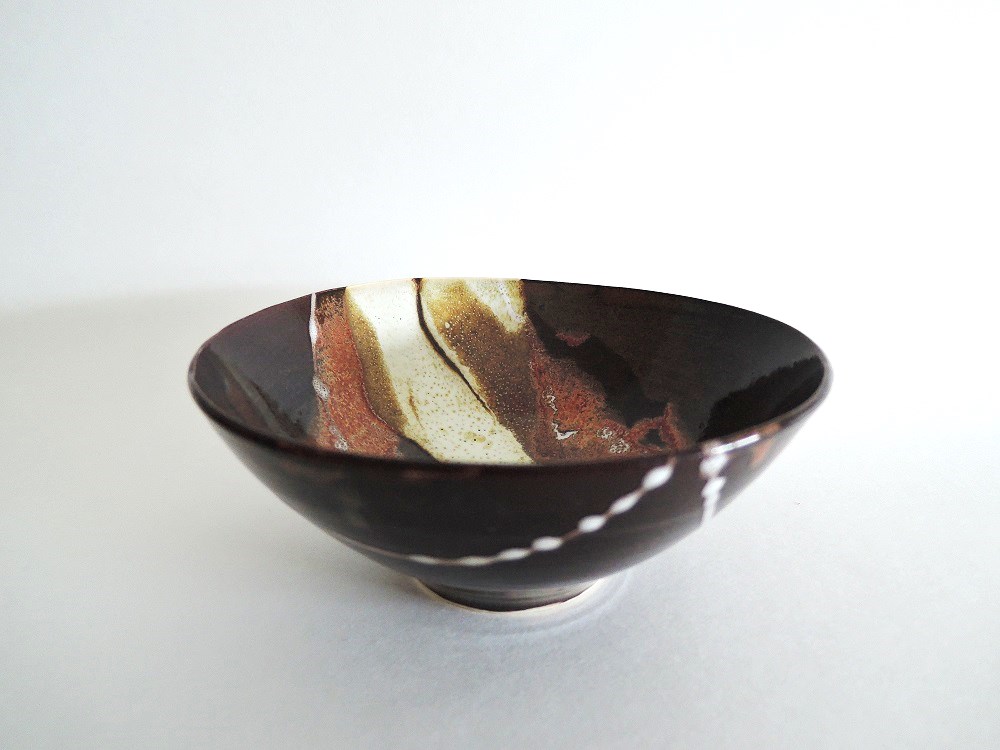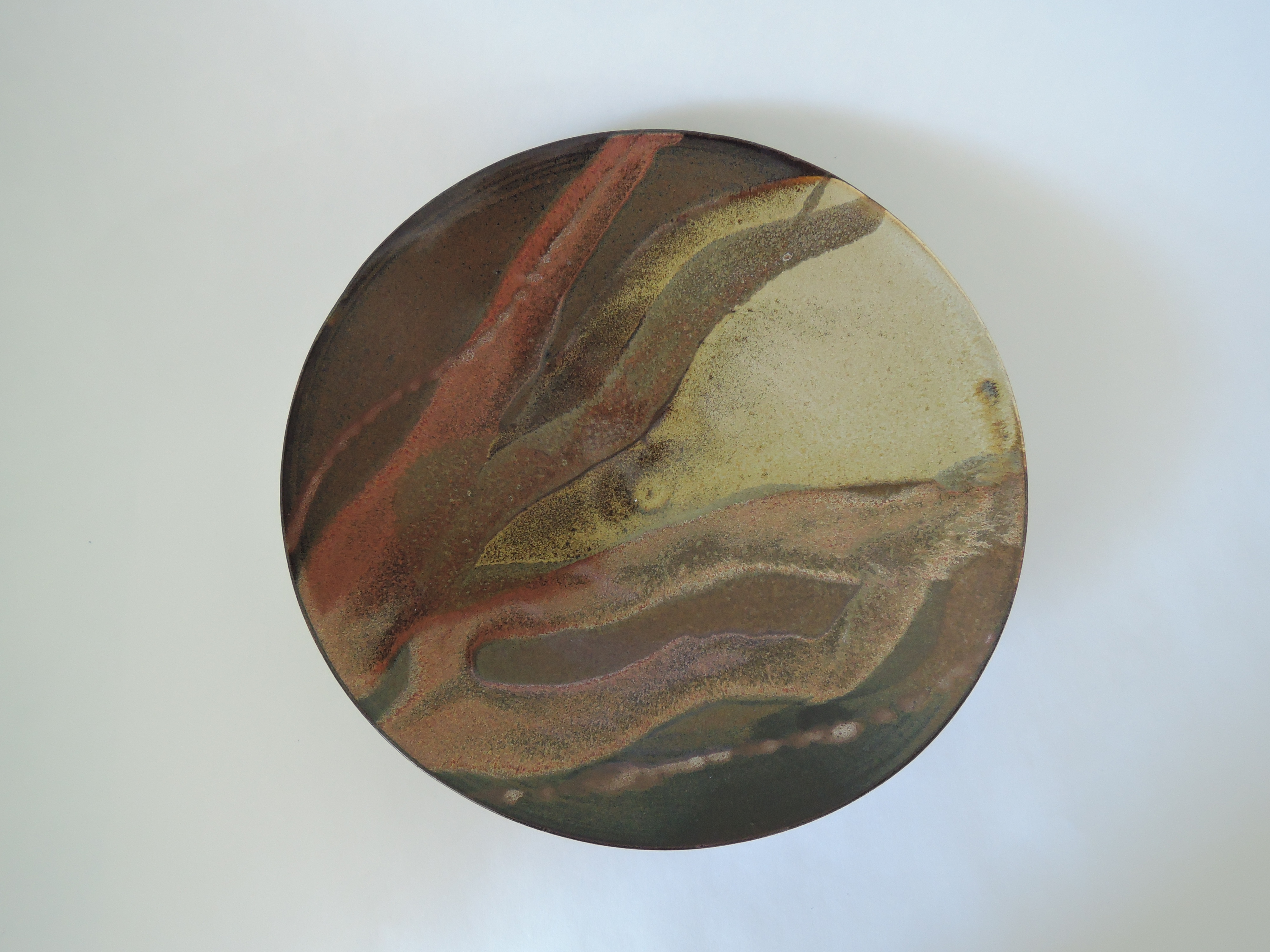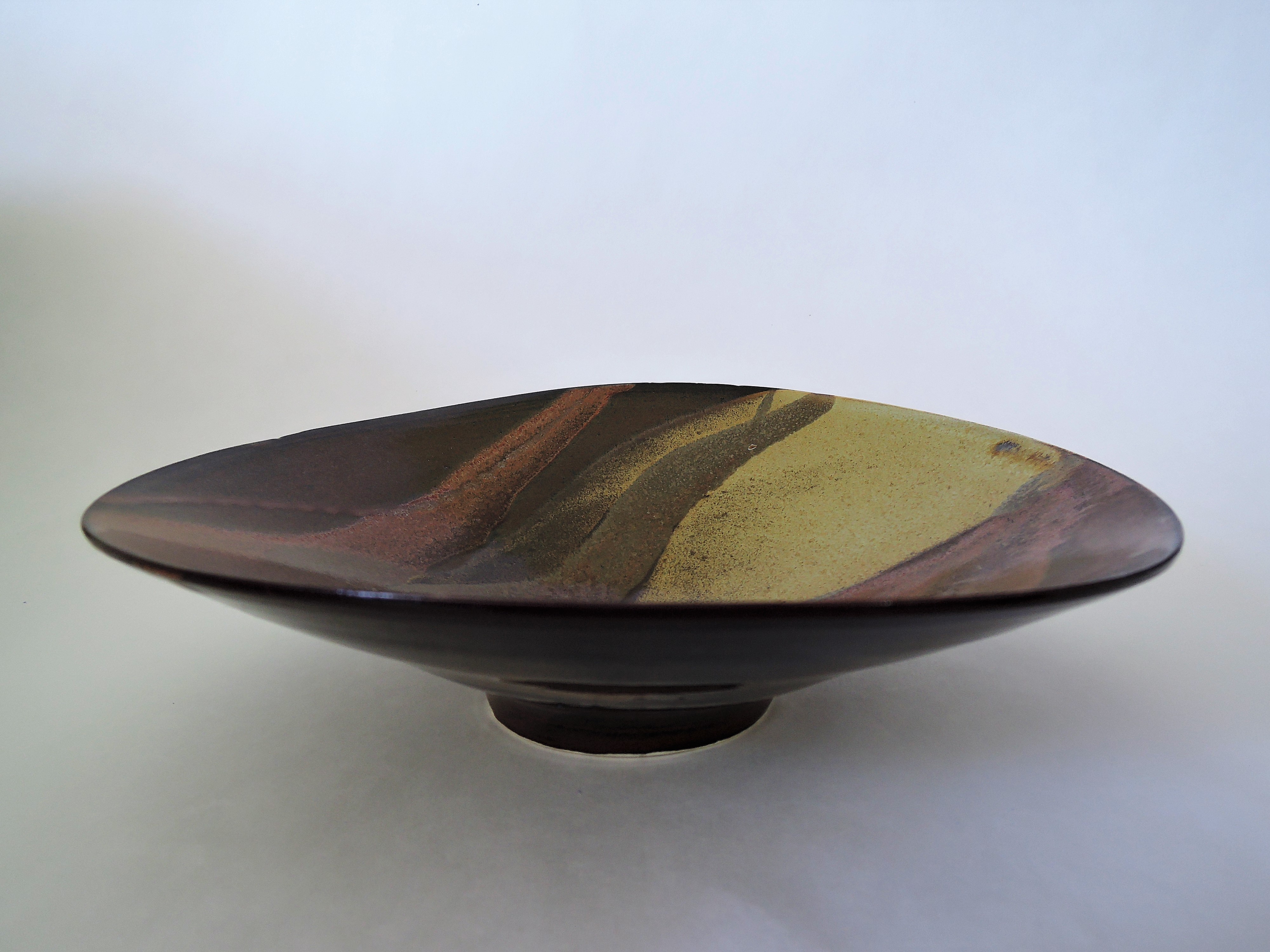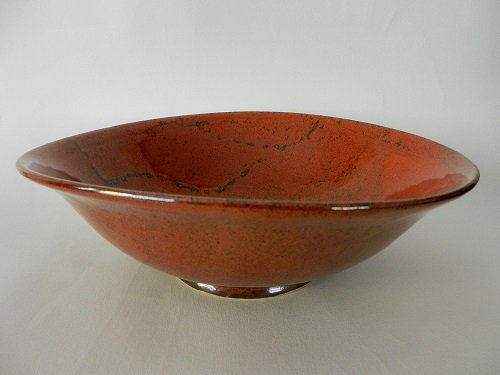I’ve been making distorted bowls for some years now; what varies is the size, the degree of distortion, and of course the glazes I use. I started making them after my first ikebana teacher, at her home in the outskirts of Brussels, showed me a cupboard where she kept her favourite vases. These Japanese vases she took out were all lovely, but I was particularly struck by a wide bowl with its sides seemingly distorted inwards and upwards, creating a lovely wave-like effect.
What I aim for is a bowl you’d want to hold lightly in the hand, twisting it round and to catch sight inside of the coloured trails of glaze drawing your eye to the wave-like rim.
Making them myself revealed a number of challlenges. Pushing the walls of a bowl inwards after it has been trimmed is tricky: the rims at the two narrower ends are inclined to crack, as is the part near the angle at the foot, if it is trimmed thin. Under the pressure of the hands, the sides of the base may also lift, so the bowl no longer stands flat on its trimmed foot. And the squirts of glaze don’t always create the pleasing line I want.
Those problems I have learned to cope with. But in the case here of the two larger bowls, which I distorted, they show little sign of it after firing. I can only think that my recent efforts at making lighter pieces, with thinner, more carefully worked walls, has meant that the walls give in more easily to clay memory (the tendency of clay to return to its earlier, unfired, shape), and to gravity, during firing.
Dimensions:
dia: 21/22 cm, ht: 5.5 cm;
dia; 18.5/19.5 cm, ht 5 cm;
dia: 11 cm, ht: 5.5 cm
dia: 9.5 cm, ht 4 cm
Porcelaneous stoneware, fired to cone 6, in oxidation.
